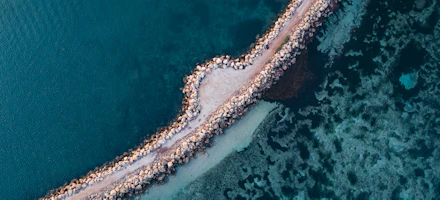
Here's how to do humpback whale season along the Coral Coast
7 July 2022
The World Heritage-listed Ningaloo Marine Park covers some 2,435 square kilometres of ocean from Coral Bay to Exmouth, its deep-sea canyons and colourful coral reefs teeming with all manner of marine life. Schools of stripey fish and armies of loggerhead turtles call the park home year-round. So do the Coral Coast’s most famed residents: the whale sharks. Humpback whales are a much more transient population, only seen in the region between July and October. Around 40,000 of them make their way along the Coral Coast each year, completing their annual migration between the fertile feeding grounds of the South West and the tropical breeding grounds off the North West Shelf. You can spot them along their way in the waters anywhere from Cervantes to Exmouth, but the best whale-watching experiences happen in the towns of Geraldton, Kalbarri, Coral Bay, and Exmouth.
How to see the whales
Australia’s Coral Coast is peppered with great whale-watching vantage points. Walk the seaside Bigurda Trail between Eagle Gorge and the Natural Bridge in Kalbarri, and there’s every chance you’ll spot breaching and blowing whales beyond the ragged red sea cliffs. In spring, the humpbacks congregate in the Exmouth Gulf as mother whales and their calves stop to rest and nurse. Bring a picnic and make yourself comfortable at Bundegi or Town Beach to chance a sighting of them, or make it a surety and head for higher ground at Vlamingh Head Lighthouse.
Though the view from up there is good, you can’t get a better vantage point than on a heli-tour or scenic flight over the Ningaloo region. There’s no mistaking the shape of a humpback from above, nor that of a whale shark, turtle, or manta – all highly probable bonus sightings while whale-spotting from the air. Playing a game of aerial marine-life bingo is thrilling, but the most memorable whale encounters in the region are the ones that get you up close and personal with the gentle giants of the sea.
The Ningaloo Marine Park is the only place in Western Australia where you can get in the water and swim with the migrating humpback whales. Much like the whale shark swim, the humpback whale swim is a completely wild experience, leaving the whale(s) to their own devices as you gently paddle a few metres away. There are some easy guidelines to follow to ensure the safety and comfort of both the whales and the swimmers, but if you’re not quite that confident in the water, you can always join as an observer for a lesser fee.
Alternatively, plenty of on-boat whale-watching tours leave from Kalbarri, Coral Bay, and Exmouth during the season. With no swimming component, these tours get you within 50m of the cruising giants while you ooh, aah, and get your camera clicking from the comfort – and dry – of a large tour boat.



























